#gender-responsive disaster risk reduction
Text
Launch of the Gender Action Plan to support implementation of the Sendai Framework for Disaster Risk Reduction 2015-2030 (CSW68 Side Event).
The Sendai Framework for Disaster Risk Reduction 2015-2030 (Sendai Framework) seeks to "prevent new and reduce existing disaster risk through the implementation of integrated and inclusive economic, structural, legal, social, health, cultural, educational, environmental, technological, political and institutional measures that prevent and reduce hazard exposure and vulnerability to disaster, increase preparedness for response and recovery, and thus strengthen resilience."
Watch of Launch of the Gender Action Plan to support implementation of the Sendai Framework for Disaster Risk Reduction 2015-2030 (CSW68 Side Event)
Objectives of the event The event will:
Launch the Gender Action Plan to Support Implementation of the Sendai Framework for Disaster Risk Reduction 2015-2030 (Sendai GAP)
Showcase good practices in gender-responsive disaster risk reduction
Provide an opportunity for key stakeholders to make commitments of support to implement the Sendai GAP.
Related Sites and Documents
The Sendai Framework for Disaster Risk Reduction 2015-2030
Concept Note

#csw68#women#unddr#disaster recovery#disaster risk reduction#climate impacts#women's health#women and girls#gender-responsive disaster risk reduction#side events#Gender Action Plan#sendai framework
0 notes
Text
World Water Week: Gender inequality and environmental challenges related to water resources and sanitation
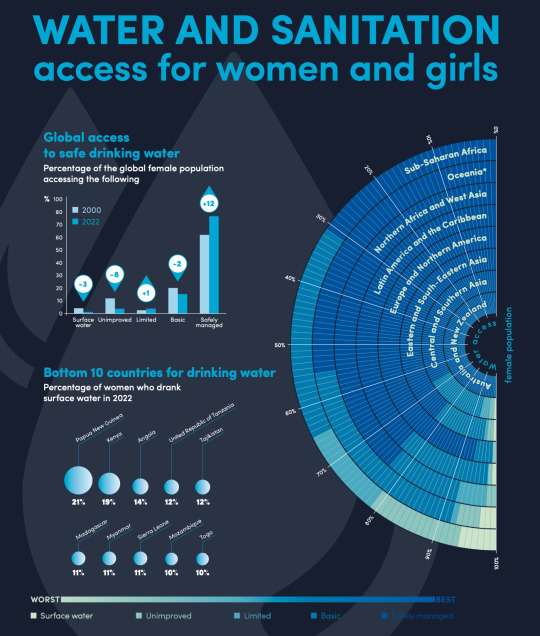
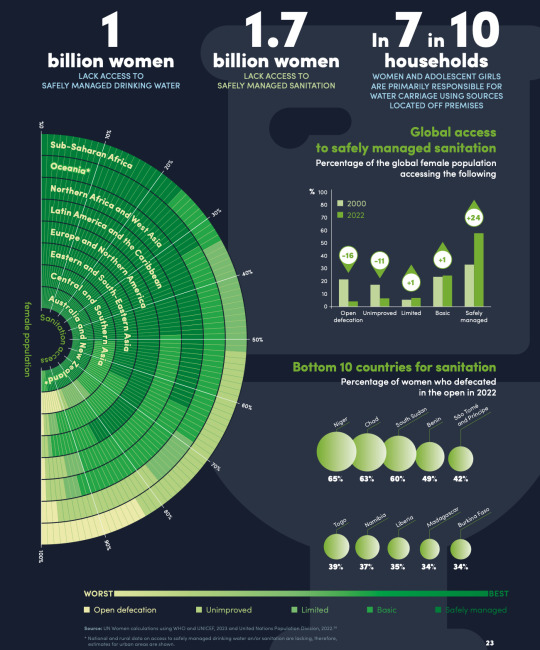
UN Women provided recommendations with focus on addressing various aspects of gender inequality and environmental challenges related to water resources and sanitation. These recommendations include:
Enact Gender-Responsive Legal Frameworks and Institutions for Water Protection:
Implement strong legal frameworks recognizing water resources as entities with independent rights.
Incorporate the "rights of Nature" approach into law to promote harmony with the environment.
Ensure inclusive participation of women, Indigenous groups, and local leaders in natural resource management.
Reverse Unsustainable Consumption Patterns:
Shift consumption patterns, particularly among high consumers, to protect the environment.
Use education, public awareness, policy changes, and global collaboration to promote equitable livelihoods.
Prioritize Women in Climate Change Adaptation and Mitigation:
Include women and vulnerable populations in climate change action plans.
Create gender-responsive activities to address water-related disasters.
Enhance women's capacity for disaster risk reduction.
Address Gender Inequality for Safe Water Access:
Ensure equitable access to safe drinking water and sanitation services.
Reduce the water-collecting burden on women and girls.
Improve access for underserved and marginalized groups.
Promote Women's Participation in Water Governance:
Encourage women's leadership roles in water governance for better management and accessibility.
Prioritize gender-sensitive water infrastructure.
Implement measures like quotas to address gender disparities in leadership.
Include Marginalized Women Activists in Decision-Making:
Integrate perspectives of women activists, especially from marginalized communities, in policies and programs.
Collaborate with citizens, local leaders, and youth for sustainable solutions.
Prioritize Safe Water and Sanitation in Communities:
Ensure safe drinking water, hygiene facilities, and sanitation services in schools and health centers.
Support adolescent girls' needs and maternal health.
Strengthen Partnerships and Funding:
Collaborate across countries and provide financial support to address the water crisis.
Foster cooperation and ecosystem protection.
Invest in Gender-Disaggregated Water Data:
Collect gender-disaggregated data to inform water and sanitation policies.
Monitor progress, reach, and effectiveness of programs, considering marginalized groups.
These recommendations highlight the importance of recognizing water resources as essential and interconnected elements of our ecosystems, and the critical role that gender equality plays in achieving sustainable water management and accessibility.
Read more: https://www.unwomen.org/sites/default/files/2023-07/from-commodity-to-common-good-a-feminist-agenda-to-tackle-the-worlds-water-crisis-en.pdf
0 notes
Text
Accelerating action for gender responsive disaster risk reduction
UN Women is dedicated to ensuring that gender considerations are fully integrated into the Sendai Framework implementation, including its midterm review. UN Women supports the UN system to ensure gender responsive DRR under the guidance of the UN System’s Senior Leadership Group (SLG) on DRR for Resilience, which brings together 50 UN entities.
UN Women is also supporting countries in this…
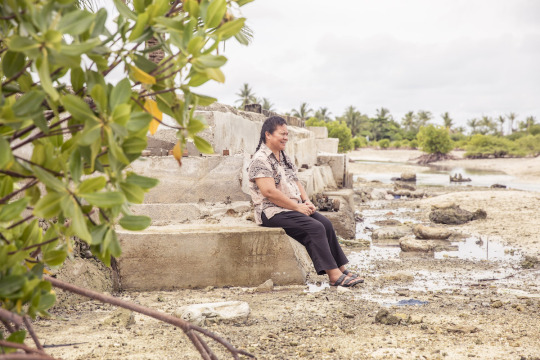
View On WordPress
0 notes
Text
Accelerating action for gender responsive disaster risk reduction
UN Women is dedicated to ensuring that gender considerations are fully integrated into the Sendai Framework implementation, including its midterm review. UN Women supports the UN system to ensure gender responsive DRR under the guidance of the UN System’s Senior Leadership Group (SLG) on DRR for Resilience, which brings together 50 UN entities.
UN Women is also supporting countries in this…
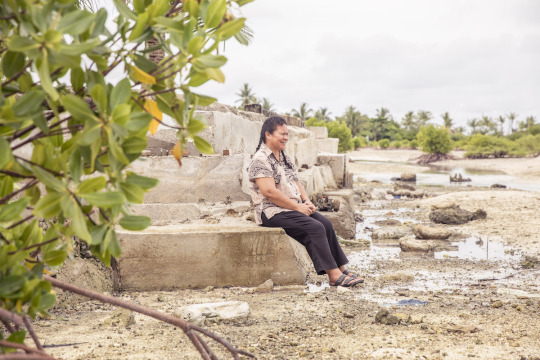
View On WordPress
0 notes
Text
Accelerating action for gender responsive disaster risk reduction
UN Women is dedicated to ensuring that gender considerations are fully integrated into the Sendai Framework implementation, including its midterm review. UN Women supports the UN system to ensure gender responsive DRR under the guidance of the UN System’s Senior Leadership Group (SLG) on DRR for Resilience, which brings together 50 UN entities.
UN Women is also supporting countries in this…

View On WordPress
0 notes
Text
Accelerating action for gender responsive disaster risk reduction
UN Women is dedicated to ensuring that gender considerations are fully integrated into the Sendai Framework implementation, including its midterm review. UN Women supports the UN system to ensure gender responsive DRR under the guidance of the UN System’s Senior Leadership Group (SLG) on DRR for Resilience, which brings together 50 UN entities.
UN Women is also supporting countries in this…
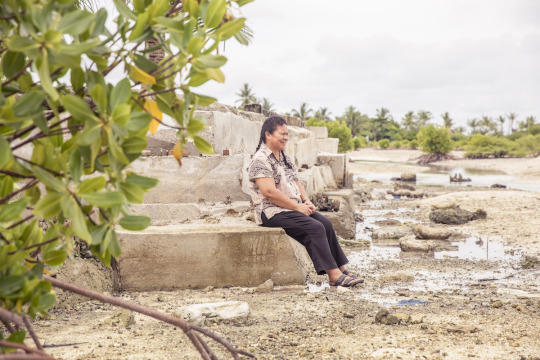
View On WordPress
0 notes
Text
Accelerating action for gender responsive disaster risk reduction
UN Women is dedicated to ensuring that gender considerations are fully integrated into the Sendai Framework implementation, including its midterm review. UN Women supports the UN system to ensure gender responsive DRR under the guidance of the UN System’s Senior Leadership Group (SLG) on DRR for Resilience, which brings together 50 UN entities.
UN Women is also supporting countries in this…

View On WordPress
0 notes
Text
Accelerating action for gender responsive disaster risk reduction
UN Women is dedicated to ensuring that gender considerations are fully integrated into the Sendai Framework implementation, including its midterm review. UN Women supports the UN system to ensure gender responsive DRR under the guidance of the UN System’s Senior Leadership Group (SLG) on DRR for Resilience, which brings together 50 UN entities.
UN Women is also supporting countries in this…
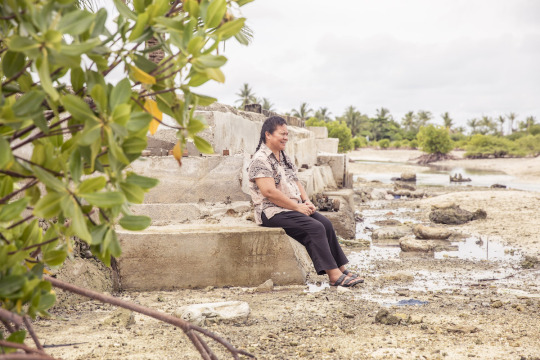
View On WordPress
0 notes
Text
UNDRR, SM Prime laud women leaders in disaster resilience
SM Prime Holdings (SMPHI) recently announced its support for the global search for women leaders in disaster resilience.
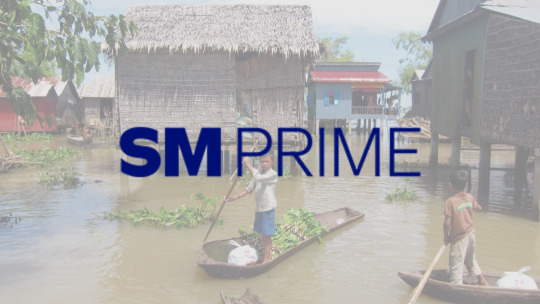
For the second consecutive year, SMPHI is sponsoring Women’s International Network on Disaster Risk Reduction (WIN DRR) Leadership Awards, a flagship program of the United Nations Office for Disaster Risk Reduction (UNDRR).
SMPHI Vice President for Corporate Compliance Liza B. Silerio said that the support is aligned with the company’s drive to recognize women’s leadership in disaster risk reduction. “This is important in inspiring other women to fully and effectively participate in promoting gender equality and empowerment while building our collective resilience.”
UN Special Representative of the Secretary-General for Disaster Risk Reduction Mami Mizutori expressed gratitude for the support, stating, “The awards highlight the key role of women as leaders and agents of change in building resilience and actively participating in the creation and implementation of DRR strategies, policies, plans, and programs in their regions. Their stories reflect the diversity of solutions required to meet the converging challenges of accelerating climate change and disasters in the region.”
“We look forward to continued collaboration with SM in our DRR agenda,” Secretary General Mizutori added.
The WIN DRR Excellence Awards 2022 sponsored by SM Prime has 15 finalists shortlisted from 420 nominations received across 24 countries in the Asia-Pacific. The winner will be announced at the Asia Pacific Ministerial Conference on Disaster Risk Reduction Brisbane on 21 September 2022. US$10,000 will be awarded to an individual woman who has achieved exceptional professional success in DRR.
The WIN DRR partnership is consistent with SM Prime Holdings’ social commitment to women's empowerment, resilience, good health, and well-being of women. The company’s corporate social responsibility arm, SM Cares, supports programs that advance these causes.
The Women's International Network on Disaster Risk Reduction (WIN DRR) is a professional network to support women working in disaster risk reduction, in all their diversity. Its overall goal is to empower women to attain leadership and enhance their role in decision-making in disaster risk reduction in Asia-Pacific. The WIN DRR Philippine Network is powered by SM Prime and Asia Pacific College.
Earlier this year, SM Prime through its SM CARES, partnered with UNDRR in celebrating women's empowerment through a webinar on the role of women in disaster resilience. In her keynote message, Mizutori emphasized that “women’s equal participation and leadership in public life including disaster risk reduction is important and it is also essential to reducing disaster risk in achieving the United Nations sustainable development goals.”
_________________
ABOUT SM PRIME HOLDINGS
SM Prime, one of the leading integrated property developers in Southeast Asia, remains committed to its role as a catalyst for economic growth, delivering innovative and sustainable lifestyle cities, thereby enriching the quality of life of millions of people. Sustainability and Disaster Risk Reduction and Resilience form part of SM Prime's core business strategies. It ensures that its risk-informed investments catalyze sustainable development and positive change in the communities where it operates.
For more information on SM Prime Holdings and its other programs for disaster preparedness, visit its website at www.smprime.com.
–
📧 If you wish to send an invite and feature your province/company brand/event; Just ask the author of this vlog, email us at [email protected]
Follow our Social Media Accounts:
Facebook Fan Page: https://www.facebook.com/TakeOffPHBlog
Instagram/Twitter: @takeoff_ph
Website: https://takeoffphilippines.com
Subscribe to our YouTube Channel:
https://www.youtube.com/c/TakeOffPhilippines
0 notes
Text
28 June 2022 I Liga ng mga Barangay 3rd Provincial Congress
The Barangay Officials of Barangay Cebulano, Carmen, Davao del Norte attended the 3-day Provincial Liga Congress organized by the Provincial Government of Davao del Norte, Department of the Interior and Local Government (DILG) and Liga ng mga Barangay - Davao del Norte Chapter held in Grand Regal Hotel, Davao City to upscale and capacitate their knowledge with regards to the latest trends and updates in local governance.
Contents discussed in the congress include the following:
* Topic 1: Updating of Gender and Development (GAD) Plans & Budget in the Barangay
* Topic 2: Strengthening the Implementation of Barangay Drug Clearing Program and the Community Involvement in Attaining a Drug-Free Barangay
* Topic 3: Training and Planning Workshop on Disaster Risk Reduction & Management
* Topic 4: Training on Gender-Responsive, Child-Friendly & Culture Sensitive Katarungang Pambarangay

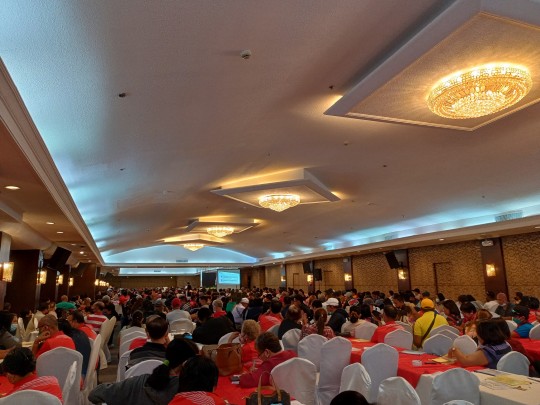


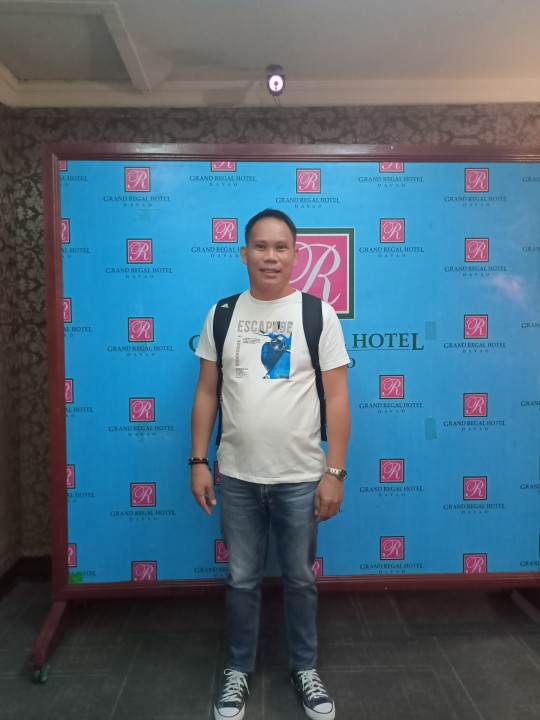


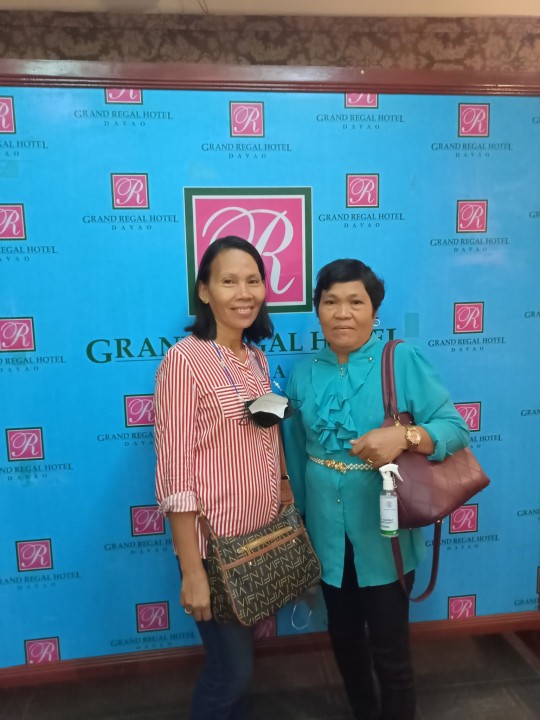
1 note
·
View note
Photo

2022 International Women’s Day!
“Gender equality today for a sustainable tomorrow”
Recognizing the contribution of women and girls around the world, who are leading the charge on climate change adaptation, mitigation, and response, to build a more sustainable future for all.
Advancing gender equality in the context of the climate crisis and disaster risk reduction is one of the greatest global challenges of the 21st century. The issues of climate change and sustainability have had and will continue to have, severe and lasting impacts on our environment, economic and social development. Those who are amongst the most vulnerable and marginalized experience the deepest impacts.
Women are increasingly being recognized as more vulnerable to climate change impacts than men, as they constitute the majority of the world’s poor and are more dependent on the natural resources which climate change threatens the most.
At the same time, women and girls are effective and powerful leaders and change-makers for climate adaptation and mitigation. They are involved in sustainability initiatives around the world, and their participation and leadership results in more effective climate action.
Continuing to examine the opportunities, as well as the constraints, to empower women and girls to have a voice and be equal players in decision-making related to climate change and sustainability is essential for sustainable development and greater gender equality.
Without gender equality today, a sustainable future, and an equal future, remains beyond our reach.
March 8, 2021: A girl puts flowers at an installation of women's red shoes displayed on staircase, as a symbol to denounce violence against women, at Durresi main square in Tirana, Albania on International Women's Day. GENT SHKULLAKU, AFP VIA GETTY IMAGES
#human rights#womens#women's rights#humanity#gender equality#equal rights#climate change#sustainable#equalfutur#breakthebias#violence against women#violence against children#international women's day#internationalwomen'sday
24 notes
·
View notes
Text
Disaster Risk Reduction and Management
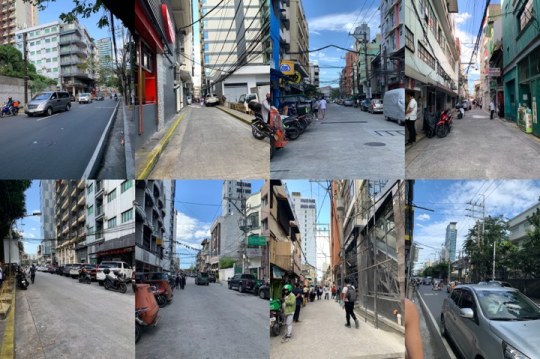
Barangay 471 is one of the one hundred and ninety-two (192) barangays situated in the district of Sampaloc in the City of Manila. The barangay population is composed of 1872 residents, wherein 840 are male and 1032 are female, and from there, 56 are senior citizens Also, the barangay is situated near the University of Santo Tomas and other neighboring schools, and thus, is considered as a transient area for many students.
Upon interviewing Mr. Roberto S. Cruz, the Executive Officer of the barangay, I have learned a lot about the situation of the community especially in times of disasters and calamities and since I’m not from here, he insisted on sharing with me some of their many hazardous experiences.
As per the statement of the Executive Officer, Barangay 471 is a very much vulnerable community just like any barangays in Sampaloc, Manila. This is certainly because Metro Manila is “topographically composed of coastal lowlands and alluvial lowlands”, and thus, this area is very prone to natural disaster and the vulnerability of the residents is very high. Some of the disasters that they continue to experience are flood and earthquake.
For the past years, these disasters have made a huge impact to the way of living of almost everyone in the community, especially the vulnerable ones, including the poor, senior citizens, students and kids. It has cost them huge damages and losses, wherein an average of their GDP was lost because of the previous typhoons (Ondoy, Pedring, Quiel, Sendong, etc.) that drowned Metro Manila.
“With combined heavy rains and strong winds, Ondoy affected 993,227 families or 4,901,234 people, making it fourth in the list of worst natural disasters in the Philippines in terms of number of people affected.” (Olan,2014)
“Twenty-three provinces and Metro Manila were placed under a state of calamity due to the widespread devastation by Ondoy.” (Olan,2014)
“In Metro Manila, the most affected areas in terms of flooding were Pasig City, Quezon City, City of Manila, Caloocan City, Muntinlupa City, and Marikina City, with the highest height of flood ranging from knee to neck level, up to roof top.” (Olan,2014)
With this, it is very evident how disasters can disrupt the functioning of not just the communities, but rather, the whole society that we belong to.
However, with these experiences and damages, the government was very eager to reduce the risk that may arise from possible disasters in the future.
“The damages brought by both Ondoy and Pepeng led to the enactment of Republic Act No. 10121 or the Philippine Disaster Risk Reduction and Management Act of 2010. The Act enhances the disaster preparedness and capabilities of the national government and local government units by providing a National Disaster Risk Reduction Management System Framework, and by institutionalizing the National Disaster Risk Reduction and Management Plan.” (Olan,2014)
To ensure that every community is prepared and ready for any disaster that may occur any time, every barangay was given the task to conduct various assessments and programs that will help each and everyone in the community. Given the right capacities and strengths, Barangay 471 was able to conduct Metro Manila Shake Drill 2019 – to train the community and to test various elements of their response plan in order to evaluate it, and De-clogging – to reduce the possible flooding in low-lying areas in the barangay. These assessments were conducted in hopes that they will be able to withstand disasters like earthquake and flood from typhoons.
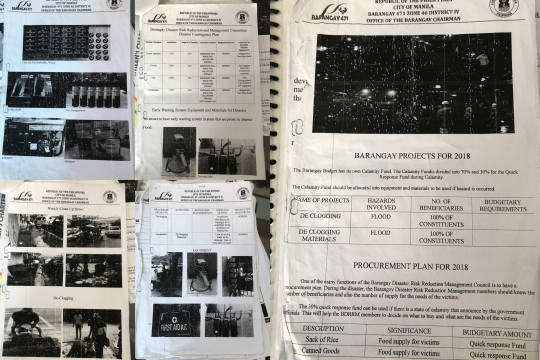
As per the result of the assessments, the barangay is a safe place for the people in the community. The barangay can accommodate people who will be affected by any disaster. The barangay engages in seminars and activities led by the government officials in the city. The barangay is ready to assist in times of disasters or calamities.

Although the community is very much ready, there is no guarantee that damages and losses will be entirely erased. This is due to the fact that not everyone in the community participates and engages in the said activities and programs, and thus, is not entirely ready for any disaster that may occur any time. Most people in this area lack the resources that they may need in order to withstand and be prepared for possible disasters.
“Among the 4,368 Filipino households surveyed across the country, 74 percent were unable to invest in disaster preparedness, mostly due to lack of funds (47.5 percent) and lack of time (20 percent).” (Cuizon, 2019)
Moreover, the lack of preparedness for disasters is not only the issue, but as well as the damage, recovery, and assistance after the disasters. Filipinos are very much known for being resilient, for always being able to bounce back after any circumstances. However, just like any normal being, most Filipinos are still not able to or experience having a hard time coping up with the aftermath of any disaster. Huge damages and losses is what they endure after every disaster or calamity that they face. Knowing how a huge number of Filipinos are susceptible to disasters, it is no wonder that even after being able to prepare, they still suffer. And worst case scenario, not everyone is g8ven the right assistance by the government. And this is known to every Filipino all around the country.
“Unsurprisingly, the study shows a large portion of the population (42 percent) had experienced significant damage to property, assets and had been displaced from their homes due to a disaster.” (Cuizon, 2019)
“The study also revealed Filipinos’ perceptions on ability to cope and recover was limited. Thirty-eight percent felt they would have difficulty recovering from a disaster in the near future, and only 22 percent were confident they would be able to recover.” (Cuizon, 2019)
With this, I think that the government should not just focus on conducting programs and activities that will ensure the readiness and preparedness of everyone at times of disasters and calamities, but rather, they should also focus on being able to serve their people even after disasters have occurred. It is very important that everyone is being given equal support and assistance by the government. This is because, nowadays, not everyone is part of the agenda for development. There are voices out there that are not heard and need echoing.
Furthermore, this experience has opened up my mind about the real deal when it comes to our country’s situation at times of disaster. I realized how a lot of people may suffer and be at risk if we are not going to take this seriously, if we are going to let hazards turn into disasters. I realized how there are some people out there having there lives at high risk because of their social status, age, gender, etc. However, if we, Filipinos, will step up our game and at least do something to reduce the possible risks that may occur in the future, we could all lessen the damage and losses that it may bring to us. Thus, we should all be aware of how crucial disaster risk reduction management is, and how crucial it is to engage everyone in this kind of activities. Disaster is inevitable and is a threat to our well-being, but with enough capacity and strength, we can lessen its impact in our lives and eventually, our society.
With this perspective, it is safe to say that these issues should be given enough attention by every Filipino. We should all raise awareness on this matter. As a Filipino youth, I can use my voice to echo the voices of those unheard by the one who is in charge of the society. I can use the social media to my advantage to spread knowledge regarding this matter and encourage them to engage in disaster management programs. As a youth, with not much power in the society, I can join organizations who share the same aim with me in order for me to turn my visions into reality and be a volunteer. Lastly, I can use my voice in order to encourage my fellow youth to do the same and take part on performing concrete actions that may help the community. I believe that through these actions, I can possibly help people especially, the vulnerable one to somehow reduce their risk and be able to increase their capacity to cope up with any disaster. There’s nothing much I can do, but, I hope that with these actions, I can address the issue and somewhat help my community in order to help the bigger community around me.
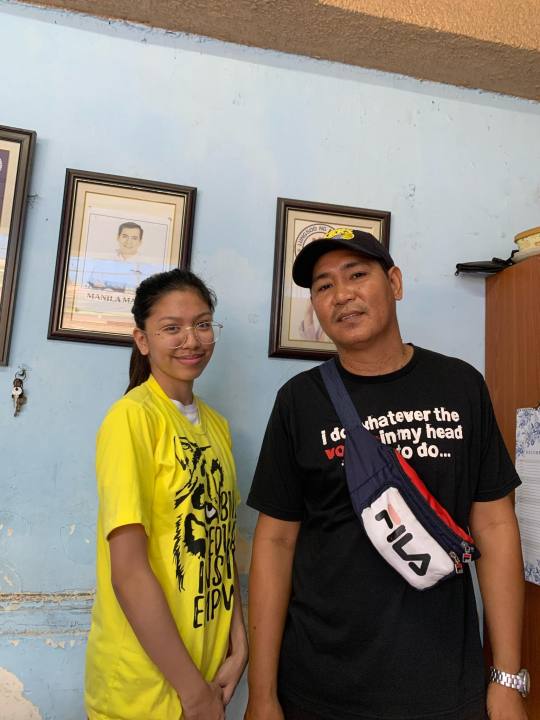
REFERENCES
Olan, S. J. (2014). Looking Back: The Records of Ondoy. https://www.rappler.com/move-ph/issues/disasters/70240-ondoy-records
Cuizon, A. (2019). Study: Most Filipinos Not Fully Ready for Disasters. https://www.sunstar.com.ph/article/1786236
2 notes
·
View notes
Text
Module 3: Disaster Risk Reduction and Management Reyes, Julianne Faith C. C-SCI-3

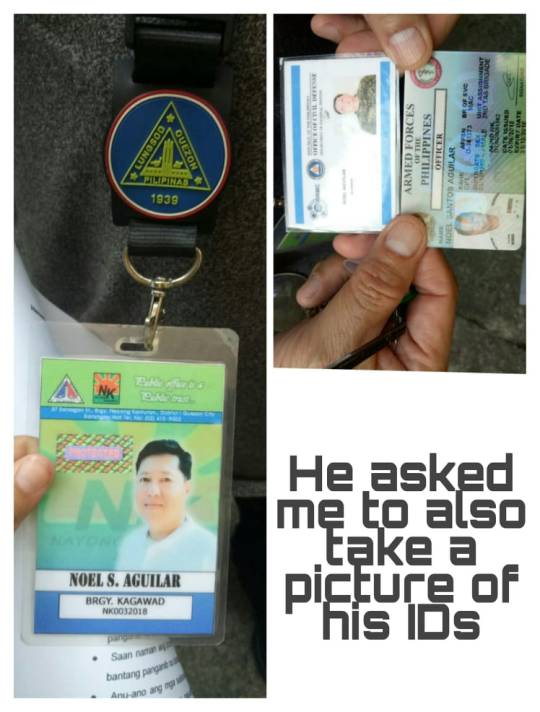
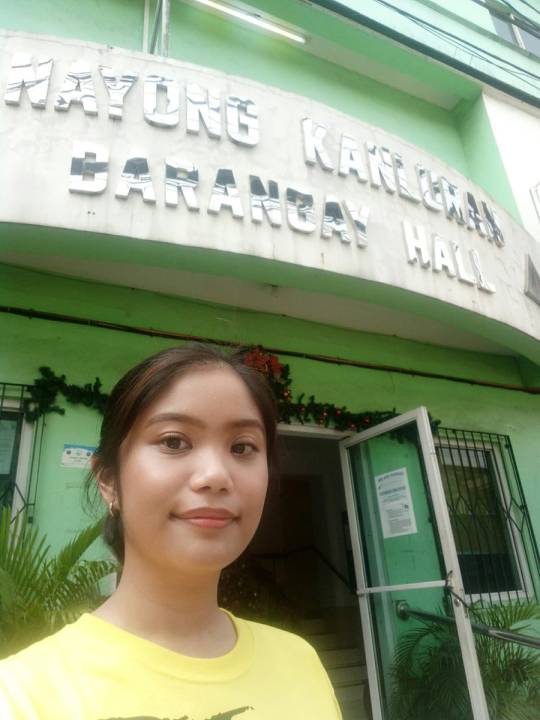
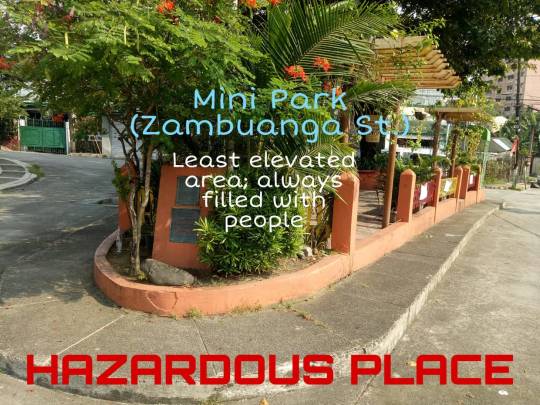
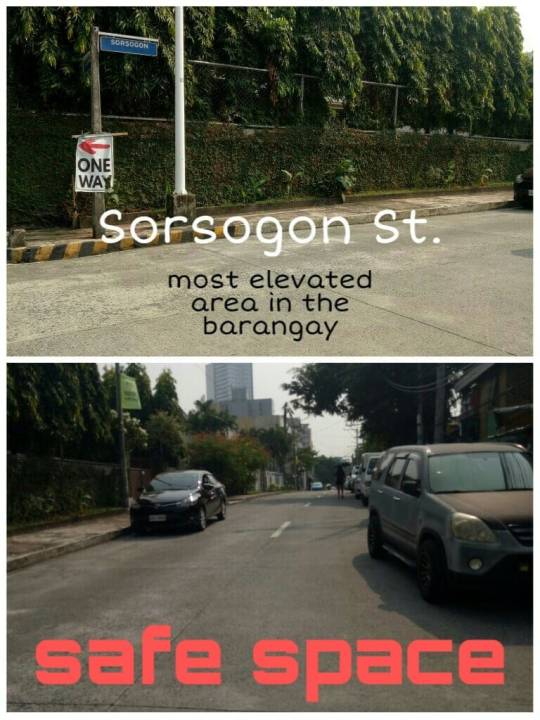
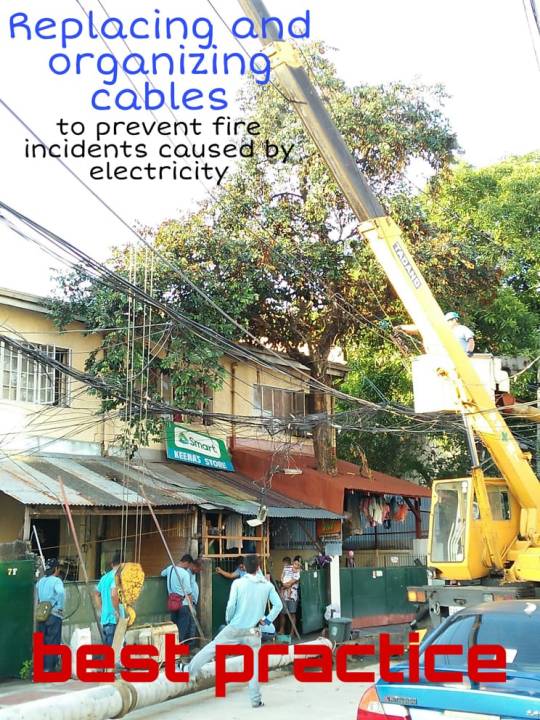
I interviewed Kagawad Noel S. Aguilar, the person in charge of Barangay Disaster Risk Reduction and Management in my barangay, Barangay Nayong Kanluran. He is a graduate from ICS (Incident Command System). He mentioned that he recently attended a seminar that focused on disaster analysis and needs analysis. He is also in charge of maintaining peace and order in the barangay.
According to him, the most recent hazard was a fire but the area was not really prone to hazards therefore the fire was easily extinguished. He said that they are well-trained and that they are able to respond quickly and that's why they are able to mitigate the risk. They have also identified all hazard prone areas within the barangay. Another hazard is the creek near our barangay; there are CCTV cameras to monitor the water level and if there is a possibility of flooding whenever there is a typhoon or heavy rains, they will ask people evacuate the area. The overflowing of this creek may also cause flooding in other barangays.
When asked about what specific place and group of people are the most vulnerable to disasters, Kagawad S. Aguilar answered that it is in Mariblo or the area near the creek and the park in Zamboanga street because it is in a low lying area. The informal settlers will be affected the most in case a typhoon comes because their houses are not well constructed. In our barangay, there are a lot of sidecars, food stalls, sari-sari stores and other small businesses. He said that flooding, heavy rains and strong winds may damage these stalls and sidecars, which may be their only source of income. During earthquakes and typhoons, the safest place to be is in Sorsogon street, which is the highest area in the barangay. In contrary, the most dangerous place is the end of Zamboanga street because it is narrow and the response team are having a hard time entering that area and it is also hard for people to exit. For him, the biggest hindrance to mitigating risks is that people don't listen to their recommendations and they don't participate as much.
Quezon City continuously conducts seminars in order to train from the tanod level until the executive level. Kagawad S. Aguilar mentioned that one can be a DRRM instructor as a career. Our barangay has an evacuation plan and assignments; there will be kagawads and tanods that will be assigned in a certain area and they will be assisting in the evacuation. In order to thrive, the barangay also offers livelihood programs and gender and development program for people who no longer have a source of income after the disaster. For women, they teach them how to bake, make candles and etc. For men, they teach them how to segregate and sell the segregated waste. The kapitan should be the one in charge for the implementation of all of these but times have changed: the incident commander or the person who graduated from ICS should be the one in charge. As mentioned before, the incident commander of our barangay is Kagawad S. Aguilar himself.
To summarize everything, the root problem of the mentioned issues is that some people become vulnerable because they refuse to conform. Maybe it is because they don't think that they'll be greatly affected by the disaster but that's not the case. The government is indeed taking action by promoting seminars, training as many people as possible; this is our first step towards resiliency. However, it is important that all Filipinos are educated about the common terms in DRRM and the different phenomena that may hit our country. I realized the importance of education and awareness because as humans, it is natural for us to not believe what we don't know much about (except in religion). One action I can take is to use my social media platforms to inform people by sharing relevent news and information. If I have time, I can also make infographics that are easy to understand and it is also best to use the Filipino language since majority can only understand Filipino. These infographics should also be posted in disaster prone areas since not all people have phones or even a social media account. The Filipinos, especially the underprivileged, need to feel included and we need to reach out; they need to know that their participation is crucial in our journey towards resiliency.
*photos of hazardous place, safe place and best practice are attached. Explanations are provided in the photos as well.
1 note
·
View note
Text
Statement on International Women’s Day - 8 March 2022
The world wants an end to the tremendous human suffering in Ukraine, with millions of Ukrainians displaced by the conflict. The situation jeopardizes the safety of all Ukrainians and, as with other conflicts in other parts of the world, puts women and girls in particular at increased risk of sexual and gender-based violence, especially those who are refugees or otherwise displaced from their homes. The United Nations Development Programme (UNDP) has joined the UN-system wide response to support those affected by the conflict, both inside Ukraine and in the neighbouring countries receiving refugees. In Ukraine, as with many other crisis and conflict contexts, from Afghanistan and the Sahel to Myanmar and Yemen -- increasing the full, equal, and meaningful participation of women in peacemaking, conflict prevention and peacebuilding efforts is crucial to find lasting solutions.
This approach also holds true when it comes to tackling climate change and environmental degradation; and boosting disaster risk reduction -- the theme of this year's Commission on the Status of Women. Women play a crucial role in the climate and environmental sectors, and they are often leading frontline natural resource management strategies. This makes them well-placed to identify and implement effective and sustainable solutions. Yet environmental degradation and increased competition over scarce resources are exacerbating the risk of gender-based violence while women environmental human rights defenders, including indigenous women, often face threats and violence. UNDP and the University of Pittsburgh's Global Report on Gender Equality in Public Administration shows that even though women are disproportionately impacted by the climate and environmental crises, they are still hitting a glass ceiling that stops them from advancing to the highest levels of leadership in environmental protection and climate action. Women's participation in ministries of environmental protection averages 33% globally, for instance, and parity in decision-making on these critical issues is exceptionally rare.
Yet change is possible. UNDP's Climate Promise is currently assisting 120 countries to enhance their climate pledges, known as National Determined Contributions (NDCs). These NDCs are important vehicles for advancing not only sustainable development but also gender equality. Globally, over 110,000 people have engaged in NDC stakeholder consultations and women are leading the process in many cases. 96% of second-generation NDCs supported under the Climate Promise include references to gender compared to 48% of first-generation NDCs. Or look to the Feminist Action for Climate Justice Action Coalition, co-led by UNDP and a consortium of partners. It aims to accelerate progress on climate justice and gender equality over the next five years. We need to build on such efforts to advance more ambitious gender-responsive environmental and climate agendas. In particular, they must take the unique needs and perspectives of women into account and actively promote women's participation and leadership. They must also make climate and environmental finance work for women. Driving forward this change can have a ripple effect. Research shows, for instance, that countries with a high representation of women in parliament are more likely to ratify the international environment treaties that the world now needs.
Guided by the Global Goals, our new Strategic Plan 2022-2025 and our upcoming Gender Equality Strategy 2022-2025, UNDP will continue its steadfast efforts to realise #GenerationEquality. UNDP itself is changing and has now achieved a 50-50 balance in our workforce. We know that a sustainable, green, and equal future for all is simply *not possible*without gender equality. Informed by data and analytics provided by resources such as the COVID-19 Global Gender Response Tracker, countries must now put women and girls -- and their needs -- at the centre of the growing green recovery. That includes new policy measures that address women's economic and social security including unpaid care work, the labour market, violence against women, and the impacts of climate change and environmental degradation on women and girls. This much is clear: creating a more equal world today will set the conditions for a more sustainable tomorrow.
Achim Steiner, Administrator, United Nations Development Programme (UNDP)
0 notes
Text
Women and Society Justice: why we need them to be on equal footing?
These days, we can observe that The Republic of India is divided in different parts, as Rural India, Urban India and Modern India out of which, Modern India is considered as the developing India while Rural India and Urban India are still in phase to be considered as part of developing India. In modern India we can see that the male dominance is not that much effective, as it is still in Rural and Urban part of India but, as we know that people from Rural India and Urban India are still spending their lives as their ancestor did. So, they are still following the same tradition and rules.
Don’t you think Rural India and Urban India need to change their life style and thought that they have inherited from their forefather?
India is considered as nation having male dominance, where male have so many rights while female have limited rights like right to education, which is mostly available to male while females are considered to learn household work, because after marriage females are responsible to manage household tasks and give birth to next generation and fulfill the need of new born child and family. But as it is mentioned in social rules and also in religious books that mother is the first teacher of a child. So, why the first teacher of child have no right to education?
Right to education can save lives of women and girl, because of their lack of empowerment and resources in many places, women and girls face life-threatening risks. Natural disasters are one example. At the 2005 World Conference on Disaster Reduction, experts discussed how gender inequality plays a role in death and injury. Other data shows that climate change, which makes natural disasters more dangerous, puts women and girls in even more vulnerable positions. Bringing a gender perspective into discussions allows women to play a bigger role in their own protection.
Right to education results in better healthcare, research shows that in general, women receive worse medical care than men. There are many reasons for this, including lack of education and lower incomes. Sexism in the medical research community also leads to worse care. Diseases that affect women more than men (such as chronic pain conditions) aren’t as well-researched. They’re often not taken as seriously by medical professionals. When women are equal in society, their health will be impacted positively.
Educated women or girl helps in businesses, when women receive the same education and job opportunities as men, they can improve any organization they join. Studies show that diversity of all types (gender, race, sexual identity, etc) increases an organization’s productivity and innovation. One 2016 study from the University of California looked at big companies in the state with some women in the top leadership positions. They performed better than the companies with mostly men at the top. Today, India’s leading service providing company Tata Consultancy Services have 33 percent women work force in their corporate business and now the company have new target to have 50 percent women in work force at international level.
Educated women or girl is good for the economy, women’s impact doesn’t stop with individual companies and organizations. Studies show that increasing women’s participation in the economy is good for the economy. In OECD countries, if the female employment rates were raised to match Sweden, it would lead to a GDP increase equivalent to $6 trillion. Gender pay gaps end up costing the economy.
Children of educated mother are healthier than children of illiterate mother, when women make their own reproductive choices, they provide better care for the children they do have. With income options equal to men, mothers can offer education, healthcare, and healthier food to their children. Studies also show that reduced infant mortality is linked to higher levels of education. Children raised in gender-equal environments will do better than those raised with inequality.
Gender Equality leads to better legal protections, under the law, women aren’t well-protected from domestic sexual and economic violence. Both of these types of violence affect a woman’s safety and freedom. Increasing women’s legal rights keeps them safe and able to build productive happy lives.
Equal footing leads to better racial equality, gender equality and race equality are closely linked. Within issues like the gender pay gap, race plays a big role. White and Asian women earn more than black, Hispanic, and native women. In the United States, black women face a higher risk of death from pregnancy-related causes. When gender equality considers race as a factor, it improves race equality at the same time.
Education reduces poverty, as poverty rates are the highest among young girls. As boys and girls get older, the gender gap in poverty gets larger. This is likely because girls don’t receive the same education and job opportunities as boys, and when girls marry, they often don’t work. Gender inequality keeps women and their families trapped in cycles of poverty. When women receive better education, healthcare, and job opportunities, they can thrive. Investing in gender inequality is a sustainable, highly-effective way to reduce poverty.
Literacy for women and girl reduces human trafficking, while men are also victims of human trafficking, women and girls make up the majority. They’re more vulnerable and traffickers see them as easier targets. With better education and job options, women and girls don’t end up in trafficking situations as often. Gender equality can also help strengthen a country, reducing poverty and instability. These fuel human trafficking.
Research shows that gender equality is linked to peace, even more so than a country’s GDP or level of democracy. States with better gender equality are less likely to use military force. When a country addresses major areas of gender inequality like education and employment, it fosters peace. We can check the situations arises due to gender inequality in our neighboring like Pakistan and Bangladesh where we can practically observe all the issues mentioned in above paragraphs.
As conclusion we can say that, education plays a vital role in development of a female child, which leads to development of country economy, which leads to development of better future of coming generations. Educated male is educated for him self while an educated girl is a source of educated family.
0 notes
Text
Sustainable Development Goals (SDGs) by sustainable fashion consulting agency
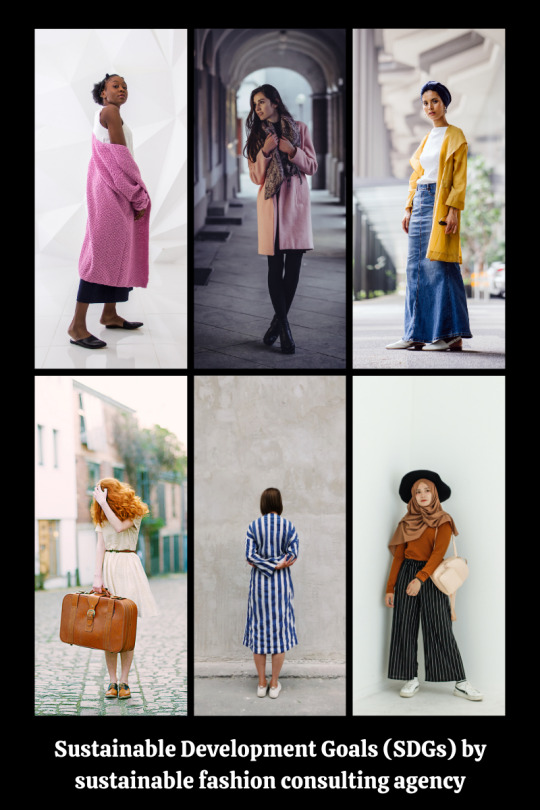
Today we as a sustainable fashion consulting agency discuss in-depth the Sustainable Development Goals (SDGs) and how to apply them to the fashion industry.
Where are the SDS born?
The influence and power of the fashion industry go far beyond the catwalks. And that is, the global fashion industry has a great social impact and environmental footprint. Many of us do not understand how the clothes we wear in day-to-day life can affect the world in which we live.
In response to how human behaviors are affecting the world, the Sustainable Development Goals were born at the United Nations Conference on Environment and Development 2012.
The sustainable fashion strategy consists of a collection of 17 global objectives aimed at the preservation and care of the environment, the end of poverty, and economic prosperity at the global level.
Each of these targets has specific indicators set to assess its progress and will have to be met by 2030.
What are the SDGs?
The SDGs are an evolution to the Millennium Development Goals, which began in 2000 intending to address the issue of global poverty.
According to Sustainable Fashion Consulting Agency, the 17 objectives are interconnected with each other, with the consequence that by influencing one others are affected. For example, combating the threat of climate emergency impacts how we manage natural resources, thus achieving gender equality or an improvement in the quality of health systems, which in turn would contribute to poverty eradication by fostering peace and inclusiveness that will reduce differences and help economies thrive. In short, this is the ultimate opportunity to improve the overall quality of life for future generations.
In turn, the Sustainable Development Goals coincided with another historic agreement that took place in 2015 at the United Nations Climate Change Conference in Paris. Together with the Sendai Framework for Disaster Risk Reduction in Japan, these agreements provide a set of achievable standards and objectives to reduce carbon emissions, manage the risks of climate change and natural disasters, and build solid foundations for the recovery of nations after a crisis.
If you want to know more about sustainable fashion then we as the top sustainable and circular Fashion Economy Canada all set to clear all the concepts easily and enjoyably through our sustainable fashion courses online ????.
0 notes